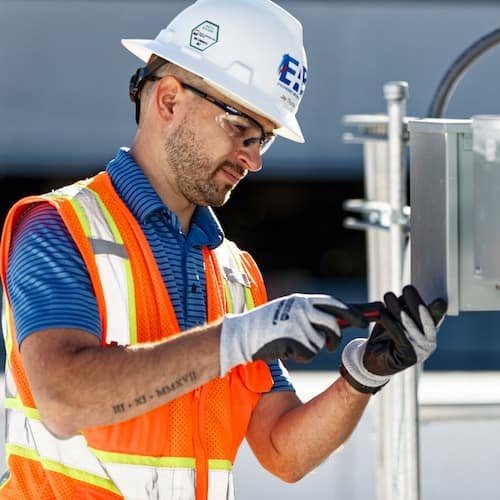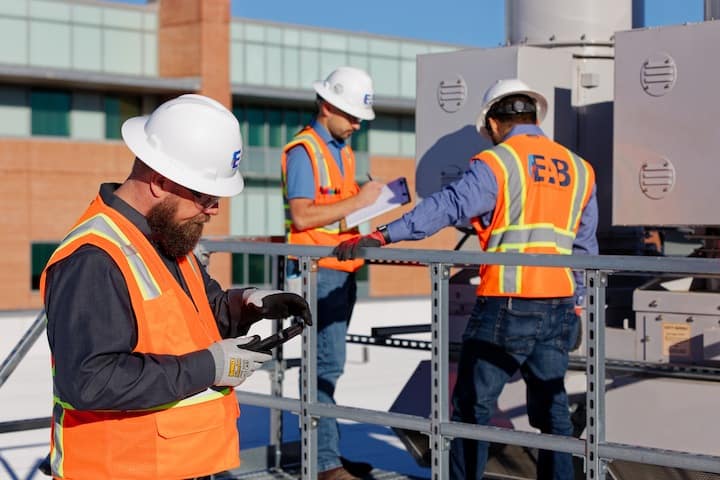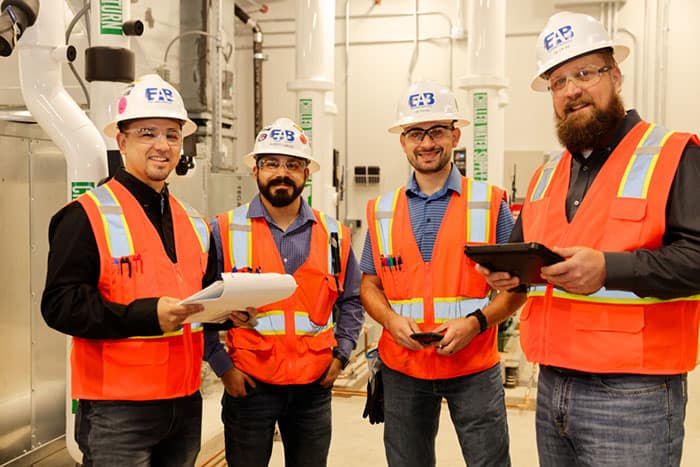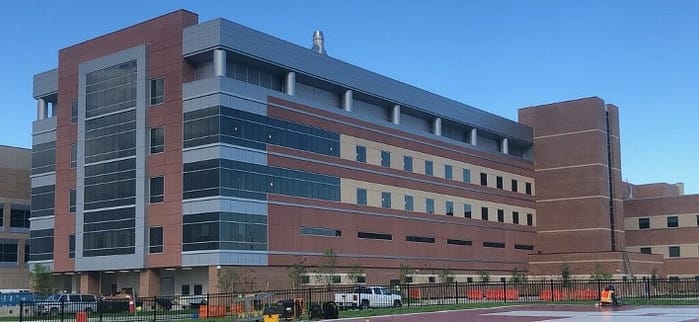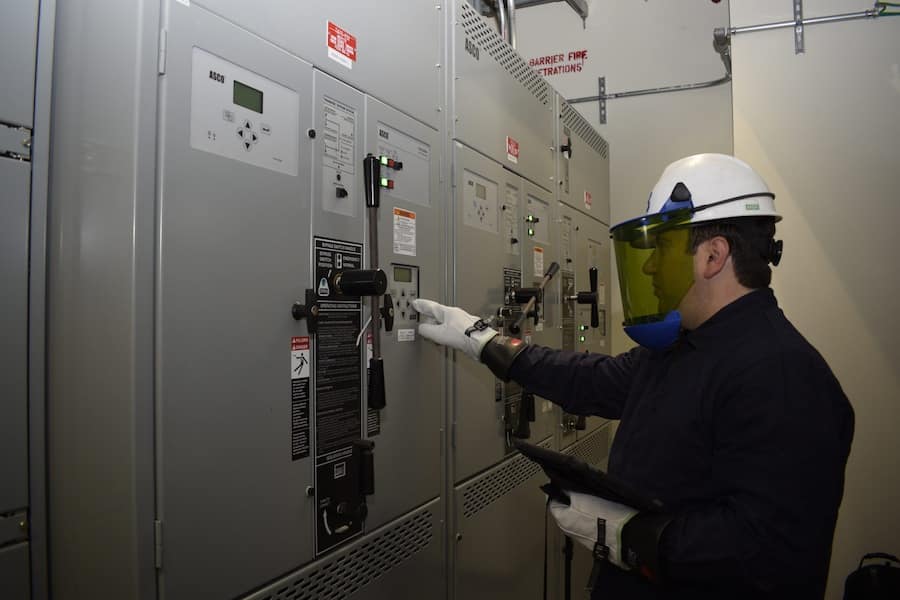
What happens when a hospital experiences a sudden power outage? In these critical moments, emergency power systems are the lifeline that keeps essential medical equipment, life safety systems, and facility operations running smoothly. For hospitals, commissioning emergency power systems is essential to ensure these systems perform reliably when they are needed most.
This article delves into the importance of commissioning emergency power systems for hospital safety. We’ll explore the key steps in the commissioning process, its benefits, and how Engineered Air Balance (EAB) successfully helped UTMB League City Hospital enhance its emergency power capabilities during their Bed Tower Expansion project.
Why Are Emergency Power Systems Critical for Hospitals?
Hospitals rely on emergency power supply systems (EPSS) to maintain uninterrupted operation during power outages. These systems, which include backup generators, transfer switches, and fuel supply systems, are designed to provide reliable power to critical areas such as operating rooms, ICUs, and life safety systems.
Failures in emergency power systems can have dire consequences, including compromised patient safety, equipment malfunctions, and disruption of critical medical procedures. Proper commissioning ensures these systems operate seamlessly, minimizing risks and enhancing the facility’s overall resilience.
What is Commissioning Emergency Power Systems?
Commissioning emergency power systems is a rigorous process of verifying, testing, and optimizing these systems to ensure they perform as intended under all expected conditions. It involves assessing the design, installation, and integration of emergency power systems with other hospital systems, such as HVAC and life safety equipment.
By simulating real-world scenarios and identifying potential issues, commissioning ensures that emergency power systems meet operational requirements and provide reliable performance during outages.
Key Steps in Commissioning Emergency Power Systems
The commissioning process for hospital emergency power systems involves several critical steps:
1. Design Phase Review
The commissioning process begins during the design phase, where the team evaluates the emergency power system’s plans to ensure they align with the hospital’s operational and regulatory requirements.
- Verify Compliance: Ensuring the design meets codes and standards, such as NFPA 110 and Joint Commission guidelines.
- Identify Potential Issues: Highlighting design challenges, such as generator sizing or fuel supply capacity, that could affect performance.
2. System Installation Verification
During installation, the commissioning team inspects the emergency power systems to ensure all components are installed correctly and meet design specifications.
- Equipment Inspection: Verifying the placement and installation of backup generators, transfer switches, and fuel systems.
- Documentation Review: Checking submittals and installation manuals to confirm adherence to manufacturer guidelines.
3. Functional Performance Testing
Functional performance testing evaluates the emergency power system’s ability to handle real-world operating conditions.
- Load Testing: Simulating peak loads to ensure the system can meet demand during an outage.
- Transfer Switch Testing: Verifying seamless transition between utility power and emergency power.
- Fuel Supply Testing: Ensuring the fuel system can sustain generator operation for required durations.
4. System Integration Testing
Hospitals are complex environments where emergency power systems must integrate seamlessly with other critical systems, such as HVAC and life safety. Integration testing ensures these systems work together effectively.
- HVAC Integration: Confirm that emergency power maintains ventilation and air conditioning during an outage.
- Life Safety System Integration: Testing fire alarms, smoke control, and emergency lighting to verify continuous operation.
5. Issue Resolution and Optimization
Any deficiencies identified during testing are resolved to ensure the system meets performance requirements. The commissioning team fine-tunes settings and recalibrates equipment to optimize reliability.
6. Operations and Maintenance Training
Commissioning includes comprehensive training for hospital staff on operating and maintaining the emergency power systems. This ensures the facility’s team is prepared to respond effectively during outages.
Benefits of Commissioning Emergency Power Systems
1. Enhanced Patient Safety
Reliable emergency power systems maintain critical life-saving equipment and ensure patient safety during outages. Commissioning reduces the risk of system failures, ensuring seamless operation under emergency conditions.
2. Regulatory Compliance
Proper commissioning helps hospitals meet regulatory standards, such as NFPA 110, NFPA 99, and Joint Commission requirements. This minimizes the risk of non-compliance penalties and enhances accreditation.
3. Risk Mitigation
Commissioning identifies and resolves potential issues before they impact operations, reducing the likelihood of power system failures during critical times.
4. Operational Efficiency
Optimized emergency power systems operate more efficiently, reducing fuel consumption and operational costs during outages.
5. Long-Term Reliability
Commissioning ensures emergency power systems are installed and configured correctly, enhancing their long-term performance and reliability.
Case Study: UTMB League City Hospital Bed Tower Expansion
The UTMB League City Hospital Bed Tower Expansion project illustrates the importance of commissioning emergency power systems to ensure hospital safety.
Project Overview
UTMB League City Hospital expanded its bed tower to meet the growing demand for medical services. This expansion required significant upgrades to the hospital’s emergency power supply system to ensure reliable power for the additional infrastructure and life-saving equipment.
Challenges
- Increased Power Demand: The bed tower expansion introduced additional power requirements that the existing emergency power system needed to support seamlessly.
- System Integration: New emergency power components needed to integrate with existing systems, including HVAC and life safety equipment.
- Regulatory Compliance: The upgraded emergency power system had to meet stringent regulatory standards for hospital operations.
EAB’s Role in Commissioning
Engineered Air Balance (EAB) provided comprehensive commissioning services to address these challenges and ensure the hospital’s emergency power system operated reliably.
Key Actions by EAB
1. Design Phase Review
- EAB evaluated the upgraded emergency power system design to ensure it met operational goals and regulatory requirements.
- Identified potential integration challenges between new and existing systems.
2. System Verification
- Inspected the installation of backup generators, automatic transfer switches, and fuel systems to confirm compliance with design specifications.
- Verified the capacity of fuel supply systems to sustain extended generator operation.
3. Functional Performance Testing
- Conducted rigorous load testing to ensure the emergency power system could handle peak demand during outages.
- Tested transfer switches to verify seamless power transitions.
4. Integration Testing
- Ensured the emergency power system supported HVAC operations to maintain temperature and air quality.
- Verified uninterrupted operation of life safety systems, including fire alarms and emergency lighting.
5. Issue Resolution
- Identified and resolved minor calibration errors and equipment inconsistencies during testing.
- Optimized system performance to enhance reliability.
6. Staff Training
- Provided training for hospital staff on operating and maintaining the upgraded emergency power system.
Results and Impact
EAB’s commissioning efforts delivered outstanding results for the UTMB League City Hospital Bed Tower Expansion:
- Reliable Emergency Power: The upgraded system provided consistent and seamless power during outages.
- Regulatory Compliance: The system met all relevant standards, ensuring operational safety and accreditation.
- Enhanced Integration: The emergency power system supported all critical systems, maintaining a safe environment for patients and staff.
This project highlights how commissioning emergency power systems can transform a hospital’s infrastructure, enhancing safety and reliability during critical moments.
Partner with EAB for Emergency Power System Commissioning
Commissioning emergency power systems is vital for ensuring hospital safety and reliability. From maintaining life-saving equipment to supporting HVAC and life safety systems, proper commissioning provides the confidence that hospitals can operate seamlessly during outages. The UTMB League City Hospital Bed Tower Expansion project demonstrates the value of expert commissioning in optimizing emergency power supply systems and securing a safe environment for patients and staff.
If you’re planning a hospital expansion or upgrading your emergency power systems, Engineered Air Balance (EAB) is here to help. Our comprehensive commissioning services ensure reliable performance and compliance with regulatory standards. Contact us today to learn more about how we can support your facility’s emergency power needs and enhance its safety and efficiency. Let EAB be your partner in ensuring reliable operations when it matters most.

